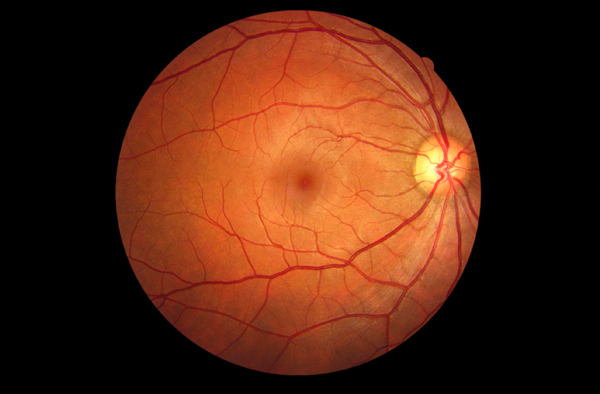
It is a light-sensitive structure located at the back of the eye. The retina contains photoreceptors, millions of light-sensitive cells in the form of rods and cones that receive and organize visual information. This information is transmitted to the brain through the optic nerve. Between the retina and the optic nerve, there exist a large supply of blood and oxygen owing to a rich supply of blood vessels. The central area of the retina is called the macula. It contains cones, these are cells that produce sharp visual images responsible for central and colour vision. The photoreceptor cells surrounding the macula are rods; these are responsible for night vision.
The light should be focused on the retina by the cornea and lens. People suffer from poor vision mainly because of the incorrect position of the light on the retina. A healthy retina helps people see clearer and better. An unhealthy retina is see in many diseases Viz retinal detachment, macular degeneration, diabetic eye disease, floaters and retinal tear. These conditions if not treated at the early stages could lead to irreparable vision loss.
The types of Retinal diseases are
Diabetes is one of the major problems in India which commonly develops because of an inappropriate diet , unhealthy lifestyle patterns or hereditary bacground. Diabetes are of two types (I and II), both of these are prone to developing a condition called Diabetic Retinopathy. Diabetes affects the eye by weakening the blood vessels considerably. These tiny blood vessels start to leak fluid, blood in the retina and eventually lead to loss of vision. High glucose and genetics further influence the progression of this condition. Proliferative and Non-Proliferative are the two stages of Diabetic Retinopathy. In the Non-Proliferative stage, the blood vessels start leaking and in the Proliferative stage, the weak blood vessels further grow and severe bleeding occurs in the vitreous and on the surface of the retina leading to permanent vision loss.
Laser is one of the most popular treatments for this condition. It aims to slow down the progression of this disease in an attempt to secure vision. However newer injections are available which not only stabilizes the disease but can also lead to visual gain. Surgery is usually reserved for advances case involving Non resolving or repeated vitreous hemorrhage and Retinal Detachment.




This condition is often related to aging responsible for irreversible vision loss and is known by the abbreviated term AMD. it usually occurs to people over the age of 60. The macula is the central area of the retina. It contains cones, these are cells that produce sharp visual images responsible for central and colour vision. With age, most people tend to lose their front vision while their peripheral vision stays normal. The central area of the macula which forms the visual understanding of people and objects is affected in this disease.
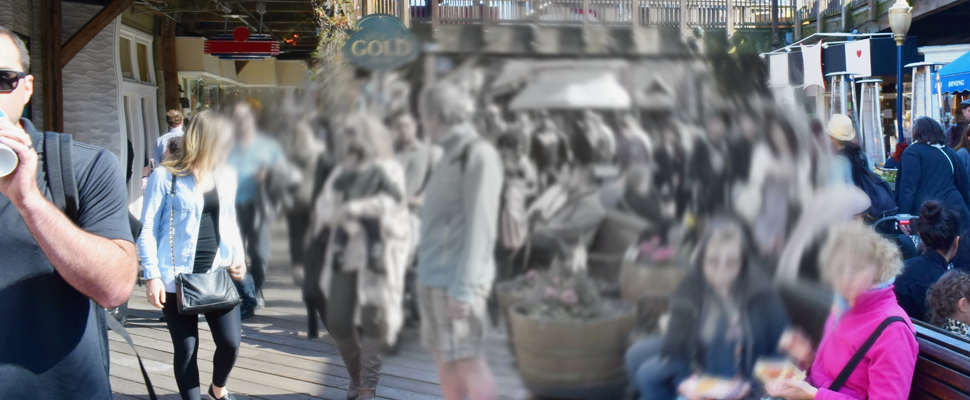

The two types of Macular Degeneration are: - Wet and Dry forms.
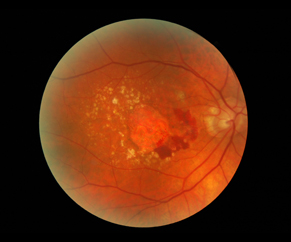
Wet Macular Degeneration
A less common yet serious condition in which the weak blood vessels start to grow causing repeated leakage of fluid, bleeding and subsequently scarring.
It is associated with severe visual loss. It is best treated when detected early. The treatment includes usually of Specialised focused laser (Photodynamic therapy) and injecting specific drugs into the eye (Anti VEGF agents). These modern day treatment if initiated on time and if continued as per requirement go a long way to preserve useful vision and improve the quality of life in these patients.
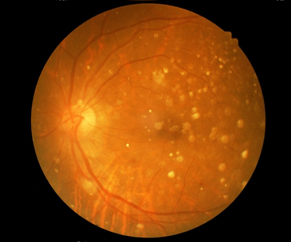
Dry Macular Degeneration
The thinning of the tissues and the deposition of pigment in the macula, also called drusen is a very common phenomenon. These do not cause immediate loss of vision but with time it progresses to cause permanent deterioration of one’s sight.
Treatment: - The common dry form of the disease is treated by oral supplementation of specific vitamins and elements as proven by studies in similar patients. This is postulated to delay the progression of the disease and thereby the severity of visual loss.
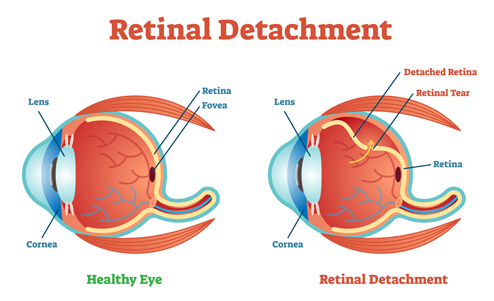
The retina, cornea and other parts of the eye work together to produce vision. A defect in any part of the eye causes a hindrance to one’s vision. The rays of light are focused on the retina by the cornea and the lens, however, if the retina has a tear, the vitreous liquid starts leaking and pools under the retina. This leads to peeling of the retina from its position described as Retinal Detachment leading to loss of vision.
Symptoms: -
Near-sightedness, Black spots that float in your vision, flash of light in the eye, blurry vision and partial vision loss- ‘curtain-like’ feeling.
Treatment
- Laser surgery in initial stages to seal the retinal tear and disallow the fluid vitreous to go under the retina.
- Cryotherapy to seal the break along with injection of a bubble of expansile gas in the eye to mend and support the weak retina- Pneumoretinopexy
- Scleral Buckling- Usage of a ring/ band made of silicone material to surround and strengthen the walls of the eye. It also involves cryotherapy to seal the break and Air/ Gas injection to sustain support to the repaired retina.
- Vitreous Surgery- Done through key holes to remove the traction caused by the vitreous jelly of the eye on the retina, followed by strengthening the retina with Laser barraging and supporting the retina with silicone oil or expansile gas. Modern day vitreous surgeries are carried out with ultramodern instrumentation obviating the need for stiches and making the surgery a controlled process adding to the overall success and enhancing comfort of the patient.


